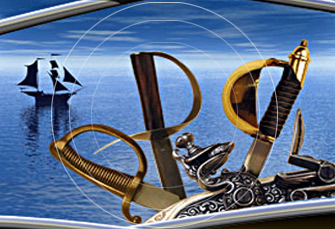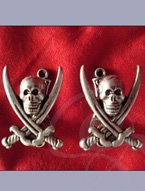
Categories

Pirate Swords
Just when pirates couldn't get any cooler, Johnny Depp goes and immortalizes Captain Jack Sparrow in Pirates of the Carribean. Sure, some of these aren't your typical pirate swords, but all fit the pirate mold quite well. Arrrr.
SBC-BUCCANEERII
Buccaneer Pirate Cutlass Available with Brass or Silver Colored Guard
$108
In Stock!

SBC-PIRATEHANGER-P
Pewter Pirate Wall Hangers for Swords, Daggers and Flintlock Pistols
$15
In Stock!
Strongblade Lore
(A Bit of History According to Strongblade)
Buccaneers: Buccaneers were, basically, pirates based in and around the Carribean. Here's a multiple choice question. See if you can guess which is the correct answer: Buccaneers got their name because:
- a. They were privateers who had "bucked" the system
- b. The word buccaneer comes from the French "boucan" which means to barbecue, because they tended to barbecue a lot.
- c. They were sailors who had to deal with stormy Carribean seas, so they learned to stand on the "bucking" decks of their ships.
Inspired by Model SBC-BUCCANEERII
